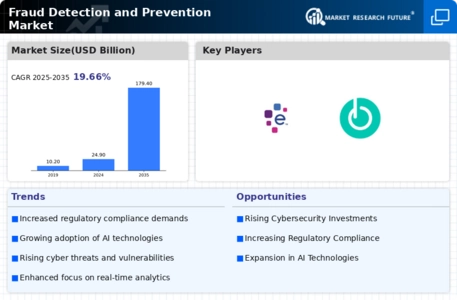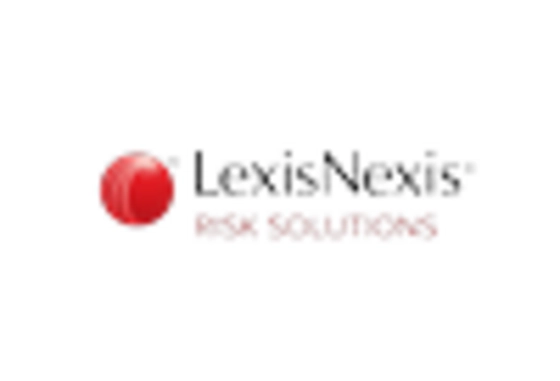Rising Cybersecurity Threats
The increasing prevalence of cyber threats is a primary driver for the Fraud Detection and Prevention Market. Organizations are facing sophisticated attacks that exploit vulnerabilities in their systems. According to recent data, cybercrime is projected to cost businesses trillions annually, prompting a surge in demand for advanced fraud detection solutions. Companies are investing heavily in technologies that can identify and mitigate these threats in real-time. This trend is likely to continue as the digital landscape evolves, necessitating robust fraud prevention measures. The urgency to protect sensitive data and maintain customer trust is pushing organizations to adopt comprehensive fraud detection strategies, thereby fueling growth in the market.
Increased Digital Transactions
The surge in digital transactions is significantly influencing the Fraud Detection and Prevention Market. As consumers increasingly prefer online shopping and digital payment methods, the volume of transactions has skyrocketed. This shift presents a lucrative opportunity for fraudsters, thereby necessitating enhanced fraud detection measures. Data suggests that e-commerce sales are expected to reach unprecedented levels, prompting businesses to invest in advanced fraud prevention technologies. The need to safeguard transactions and maintain consumer confidence is driving organizations to adopt sophisticated fraud detection solutions. This trend is likely to continue as digital transactions become the norm, further expanding the market.
Advancements in Machine Learning
The integration of machine learning technologies is transforming the Fraud Detection and Prevention Market. Machine learning algorithms can analyze vast amounts of data to identify patterns indicative of fraudulent activity. This capability enhances the accuracy and efficiency of fraud detection systems. As organizations increasingly rely on data-driven decision-making, the demand for machine learning solutions is expected to rise. Reports indicate that the machine learning segment within the fraud detection market is anticipated to grow significantly, driven by the need for real-time analytics and predictive modeling. Consequently, businesses are prioritizing investments in machine learning to stay ahead of fraudsters.
Growing Awareness of Fraud Risks
There is a growing awareness among businesses regarding the risks associated with fraud, which is a significant driver for the Fraud Detection and Prevention Market. Organizations are increasingly recognizing the potential financial and reputational damage that fraud can inflict. This heightened awareness is leading to proactive measures being taken to mitigate risks. Surveys indicate that a substantial percentage of companies are prioritizing fraud prevention in their strategic planning. As awareness continues to rise, the demand for effective fraud detection solutions is expected to increase. This trend underscores the importance of investing in comprehensive fraud prevention strategies to protect assets and ensure long-term sustainability.
Regulatory Pressures and Compliance
Regulatory compliance is a critical driver for the Fraud Detection and Prevention Market. Organizations are mandated to adhere to stringent regulations aimed at protecting consumer data and preventing fraud. Non-compliance can result in severe penalties and reputational damage. As regulations evolve, businesses are compelled to implement robust fraud detection systems to ensure compliance. The market is witnessing a surge in demand for solutions that not only detect fraud but also facilitate compliance with regulations such as GDPR and PCI DSS. This trend is likely to persist as regulatory bodies continue to tighten their oversight, further propelling the growth of the fraud detection market.


















Leave a Comment